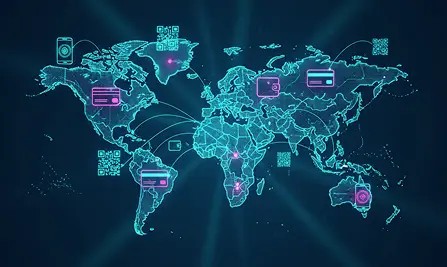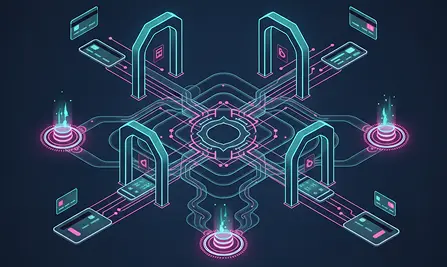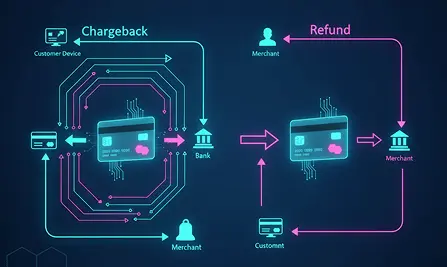What is an electronic funds transfer?

An electronic funds transfer (EFT) is a virtual transaction manner that enables the movement of funds between financial institution accounts through an electronic medium. This system removes the need for physical tests, cash, or any paper-based method of moving cash. EFTs have become a fundamental part of the worldwide financial infrastructure, supporting a big range of transactions, from normal purchases to massive-scale commercial enterprise bills. The adoption of EFTs has been pushed via the want for velocity, protection, and performance in coping with economic transactions, both for people and corporations.
The operation of an electronic funds transfer is governed through a sequence of relaxed processes that ensure an accurate and well-timed funds transfer. These techniques include using electronic networks, including the Automated Clearing House (ACH), price gateways, and banking structures, to transport money among accounts. The transaction begins when a character or entity initiates a transfer EFT request, which can be done through various channels. It includes online banking structures, mobile apps, ATMs, or point-of-sale structures. As soon as the request is made, the funds are debited from the sender’s bank account and credited to the recipient’s bank account, normally within a couple of minutes to a few days, depending on the types of EFT used.
There are several types of EFT, each serving different purposes and imparting various levels of speed and cost. The most common are direct deposits, wire transfers, ACH transfers, and electronic bill payments. Direct deposits are extensively used for payroll, government benefits, and tax refunds, providing a convenient way for recipients to acquire funds directly into their financial institution debts. Wire transfer, however, is often used for high-value or urgent transactions, both regionally and internationally. At the same time, wire transfers are rapid and typically come with higher transfer fees compared to other kinds of EFTs.
ACH transfers are another key issue of the EFT panorama, specifically within the USA. These transfers are processed in batches, allowing for the efficient handling of large volumes of transactions at a lower price. ACH is commonly used for routine payments such as mortgages, utilities, and subscriptions. Additionally, organisations use ACH to manage bulk payments, such as seller invoices and payroll disbursements. Electronic bill payments allow customers to pay bills directly from their financial institution accounts, putting off the need to write and mail checks. This method saves time and reduces the hazard of payment delays.
The rise of fintech organisations and virtual wallets has further expanded the scope and accessibility of EFTs. Services like PayPal, Venmo, and cash App have revolutionized the way people send money and transfer money, offering close to immediate transfers between customers with minimal fees. These platforms leverage the underlying EFT infrastructure to provide a seamless user experience, making it easier than ever to split bills, send items, or make purchases online. The integration of EFTs into mobile banking apps has also enhanced their usability, allowing customers to manage their funds on the go, check balances, and initiate transfers with just a few taps.
Security is a fundamental element of electronic funds transfers, as these transactions involve the funds transfer EFT of sensitive financial data over electronic networks. To shield against fraud and unauthorized access, financial institutions employ superior encryption technologies, multifactor authentication, and continuous monitoring structures. These measures are designed to protect the integrity of the transaction and ensure that funds are transferred only to the intended recipient. In addition to technological safeguards, regulatory frameworks such as the Electronic Fund Transfer Act (EFTA) in the USA offer consumer protection in the event of mistakes or fraudulent transactions.
Despite their many benefits, EFTs are not without challenges. One common issue is the potential for delays or errors due to incorrect account information. For instance, if the sender enters an incorrect account number or routing number, the funds can be misdirected or returned to the sender, causing delays. Resolving such issues frequently requires coordination between multiple financial institutions, which can be time-consuming. Additionally, while most EFTs are processed quickly, some types, such as ACH transfers, may take several days to clear, particularly if initiated on weekends or holidays.
Global EFTs present additional complexities, including currency conversion costs, exchange rate fluctuations, and varying processing times depending on the countries involved. For organizations engaged in cross-border trade, these factors can impact cash flow and economic planning. However, using worldwide payment networks like SWIFT and innovations such as blockchain-based transfers are helping to address some of these challenges, offering faster and more transparent cross-border payment solutions.
The evolution of the electronic transfer system has not only reshaped personal finance but also transformed how groups operate globally. The potential to conduct transactions without the need for physical presence has unlocked new opportunities for trade, funding, and innovation. One of the key drivers of this change is the combination of EFTs with e-trade systems, which permits agencies to accept bills from customers globally. This seamless payment technique has made it less difficult for organizations to reach new markets and grow their patron base, driving monetary growth on a global scale.
Furthermore, the developing adoption of mobile payments has made electronic benefit transfers more available to a broader population, which includes the ones which are faraway regions. Mobile money transfer services have tested the capability of electronic benefit transfers to drive financial inclusion with the aid of providing thousands and thousands of human beings with the right of entry to banking services for the first time (and using a debit card as well). These offerings allow clients to ship, receive, and shop cash using their mobile phones without the need for a traditional bank account for sending money. As a result, electronic advantage transfers have performed a sizable position in decreasing the financial divide and empowering people in developing areas.
The role of governments and regulatory bodies in the improvement of EFT infrastructure cannot be overstated. By establishing clear guidelines and standards for electronic payments, regulators have created a solid environment that fosters trust and confidence in the use of electronic benefit transfers. In many countries, central banks have implemented real-time gross settlement (RTGS) systems, which allow for the instant transfer of funds between banks. This has reduced settlement risk and increased the speed of high-value transactions, further enhancing the reliability of the financial system.
Looking ahead, the continuing expansion of EFT networks and the adoption of new technologies are expected to drive further growth in electronic benefit transfers. For instance, the introduction of digital currencies by central banks referred to as Central Bank Digital Currencies (CBDCs), could complement existing EFT systems by offering a new form of digital money that is backed by the government. CBDCs have the potential to enhance the efficiency and security of payments, reduce expenses, and support economic stability. Moreover, the rise of open banking initiatives, where financial institutions share data through secure APIs, could lead to new EFT services and greater integration with third-party platforms. These advancements are expected to enhance the speed, security, and accessibility of electronic funds transfers, making them an even more critical part of the global financial system.
In the end, electronic funds transfers (EFTs) are a catalyst for innovation and monetary growth. By enabling secure, fast, and convenient transactions, EFTs have come to be a vital part of current lifestyles, driving the virtual economy and empowering people and groups alike. As technology keeps boosting, the capabilities of EFT payments will most effectively extend, providing new methods to engage with cash and facilitating extra economic inclusion globally. Whether it is through cellular bills, the blockchain era, card transactions or virtual currencies, the destiny of electronic funds transfers is poised to carry even more benefits, making economic transactions extra efficient, reachable, and reliable for customers across the globe.
FAQ
What is an electronic funds transfer (EFT)?
An EFT is a virtual transaction system that enables the movement of funds between financial institution accounts through an electronic medium, eliminating the need for physical cash or paper-based methods.
What types of EFT are most commonly used?
The most common types of EFTs are direct deposits, wire transfers, ACH transfers, and electronic bill payments.
How do EFT transactions ensure security?
EFT transactions are secured through encryption technologies, multifactor authentication, and continuous monitoring systems, ensuring funds are transferred safely to the intended recipient.
What challenges are associated with EFTs?
Common challenges include delays due to incorrect account information, errors during transactions, and slower processing times for certain EFT types, such as ACH transfers.
How has fintech impacted EFTs?
Fintech platforms like PayPal, Venmo, and Cash App have made EFTs more accessible, providing near-instant transfers with minimal fees, while integrating EFTs into mobile banking apps for easier management of funds.








